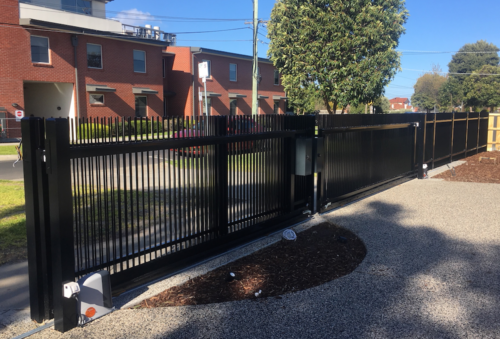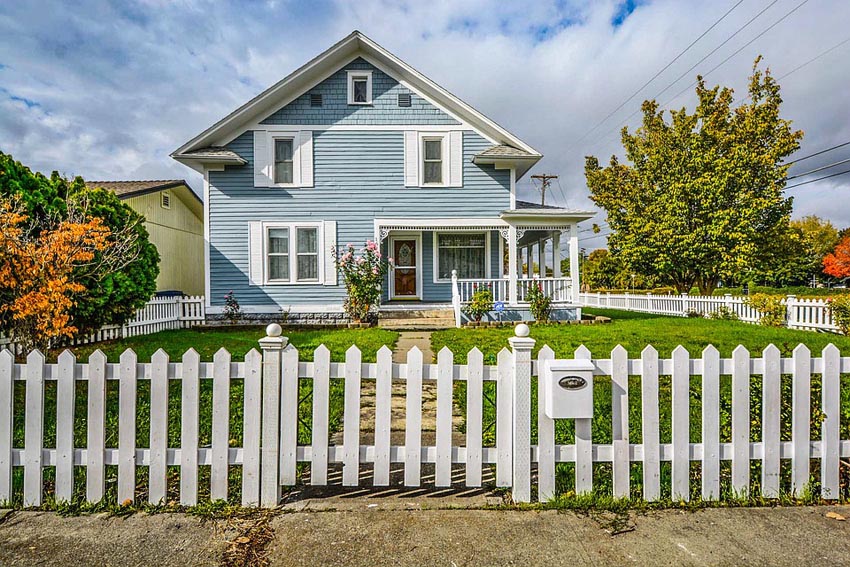For most projects you undertake on your property, the decisions you make are entirely your own or maybe the decisions are shared with your partner or a housemate. However, when it comes to boundary fencing you will need to consult with your neighbour and come to a decision that suits you both.
Fences can be a common cause of disagreements between neighbours. You and your neighbour may disagree about who is responsible for the fence and who has to organize, maintain or pay for the fence. You will likely be stuck living beside your neighbour for a while, so trying to create and maintain a civil or friendly relationship is important. Educating yourself on all there is to know about boundary fencing will put you in an advantageous position. It may help you resolve any issues that may flare up when pursuing a boundary fence between you and your neighbour. Here are ten things to know about boundary fencing.
#1 It’s not just fences!
Yes, that’s right. The law and regulations surrounding boundary fences encompass more than just the typical wooden or steel structure. It includes any type of marker that encloses a lot of lands. This can be ditches, hedges, creeks, embankments, cattle grids, and more. This is something to keep in mind if you consider not having a fence installed to try to save yourself from future disputes. You may still be required to maintain your boundary indicators, whatever they may be! Try to contact Fencing Melbourne company and get a free quote.
#2 Work out your boundary lines
For most Australian properties, you should be able to find this information out online via the land registry or in your original sales contract or building plans. Knowing your boundaries of your property is essential because it can make a big difference in conflicts or decisions regarding your boundary fence.
#3 Approach your neighbour with any issues first
As a landowner, you have the right to request that a boundary fence be built and split the costs with the adjacent property owner. When you decide to build a fence, you give them a notice to fence – this is the formal notice that requires the other party to take action. However, it’s probably more beneficial to approach your neighbour face-to-face first. No one enjoys receiving a legal document, and you may find that your neighbour is in agreement with the construction of a new fence without having to do any additional paperwork.
#4 Where exactly is the fence positioned?
If a fence is built on the boundary line, it needs to be paid for by both neighbours and will equally belong to both parties. However, suppose the fence is not built exactly on the boundary and is actually located on one person’s property. In that case, that person may have an argument for owning 100% of it – even if the other neighbour paid for half of the initial cost. This can be both advantageous and a negative thing for the person who owns it – they may end up with the entire bill for any damages! It’s sometimes hard to build a fence right on the line due to underground pipes or sewage, uneven ground, or existing shrubbery or trees. If circumstances make it so that you need to build on one person’s property instead of the dividing line, you may want to draw up paperwork that creates a legal 50/50 split of responsibility for the boundary fence.
#5 Your basic needs for a boundary fence
It’s good to know some general basic expectations/requirements for a boundary fence, as outlined by the government. In Queensland these requirements for boundary fences include having your fence between 0.5 metres to 2 metres high; being built of prescribed material such as bricks, wood, metal, cement, or wire; and not adding any materials to the boundary fence that could damage it. These guidelines are specific to properties in Queensland, but requirements are similar in other Australian states.
#6 Deciding on a style
You and your neighbour may need different things from the fence – you might have small children that you want to keep safe, they might have a large dog that they wish to contain – so it may take several conversations and compromises to decide on a fence style that you both agree upon. For most boundary fences, you want something that gives both parties privacy, security and that is attractive to look at. Good options for these would be a modular wall, as it will also be able to act as soundproofing for your backyard. Modular walls can be built to a thickness of your choosing and is designed to resemble the very chic masonry brick walls at a fraction of the price. Another great alternative would be a Colorbond wall – this is a fence trusted by many Australians. It’s durable, needs little maintenance, is long-lasting and secure. It can be powder-coated to a colour of your choosing – you and your neighbour may even be able to pick separate colours for each side.
#7 Deciding on a supplier
Once you and your neighbour have agreed on building a fence, and the style, height and other logistics behind it, it’s time to find an installer. Both parties have the right to find a quote, no matter which party served the initial notice to fence. Ideally, you want a fence installer that is affordable, trustworthy and offers an obligation free quote so you can feel unpressured in looking at prices. If you want our recommendation, Jim’s Fencing ticks all these boxes and has an extensive range of quality fences in modern and traditional styles.
#8 Where to go if there is a problem
If you and your neighbour are unable to solve a boundary fencing dispute, the next step is mediation. Mediation is easier and cheaper than legal action and usually has excellent results in helping you to come up with a compromise that is fair to both parties. If mediation doesn’t work, this is when one or both parties will need to seek legal counsel. This can be a very long, costly and stressful experience, so it should only ever be done as a last resort.
#9 Maintaining your fence
Each party should take equal responsibility for maintaining the boundary fence, which will primarily consist of cleaning it regularly and making minor repairs if necessary. If there is an existing dividing fence that experiences damage from bad weather or general wear, approach your neighbour in a friendly manner to discuss repairing or replacing fencing as needed. If damage to the fence is caused by you or your neighbour, you will need to come to a fair resolution in consultation with your neighbour. The same reporting and mediation tools may apply if you can’t decide on an outcome. However, it’s always best to try to come to some sort of resolution as legal proceedings are likely pricier than any fence repair would’ve been.
#10 Contact to Fence Expert Or Fence Installation Company
If you’re considering installing a boundary fence, or if you need repairs to an existing boundary fence, get in touch with the experts at Jim’s Fencing on 13 15 46.


